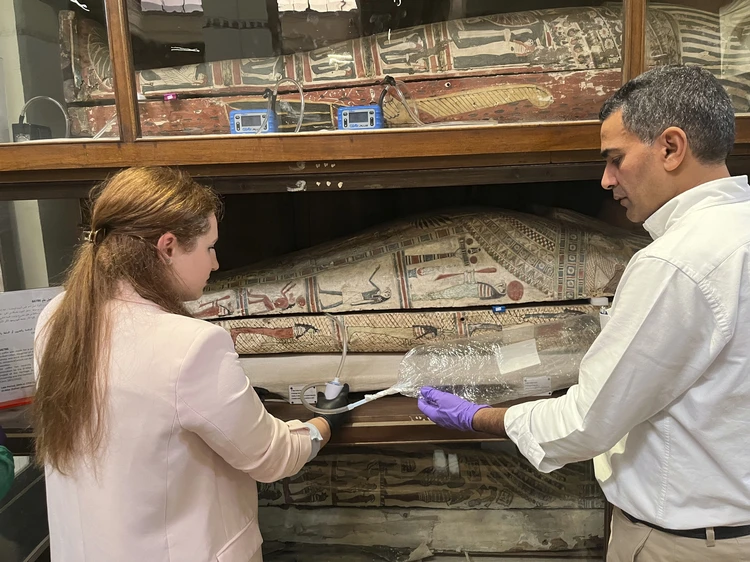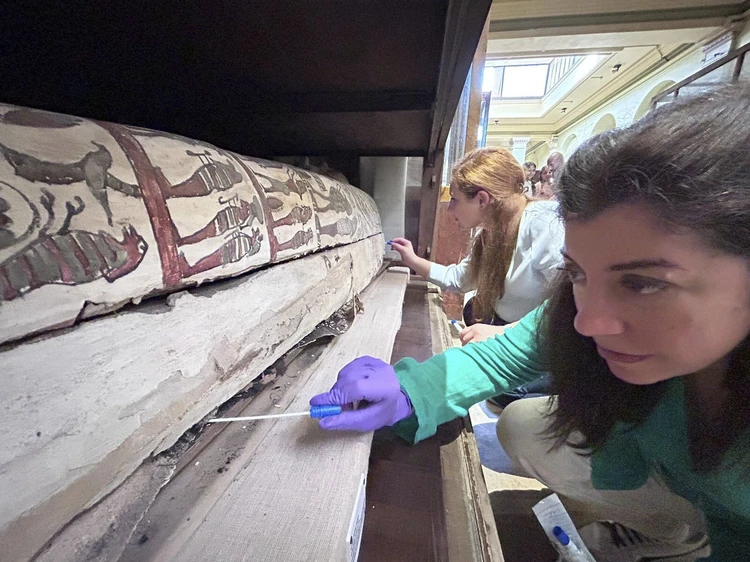What do the Pyramids of Giza smell like? Scientists have uncovered the secrets of the ancient Egyptian pharaohs.
What do the Pyramids of Giza smell like? Scientists have uncovered the secrets of the Egyptian pharaohs. Photo: Associated Press/East News.
Woody, spicy, and sweet notes. Cedar, pine, juniper. This isn't about a trendy new perfume just hitting the shelves. It's about an ancient one. Very ancient.
This is the scent of the mummies of Egyptian pharaohs. For the first time, scientists have broken down their aroma into molecules and studied them using the latest techniques. They combined these findings with the time-tested expertise of "noses" working in the fragrance industry.
This unusual - and truly groundbreaking - research was conducted by chemists from University College London and the University of Ljubljana in Slovenia. The results were published in the Journal of the American Chemical Society. The revolutionary approach, as the authors assert, will not only enhance our understanding of the mummification process but also help preserve humanity's aromatic heritage.

Photo: Associated Press/East News.
Yes, that exists too! We’re curious about how people looked in the past, what dresses they wore, what music they listened to, and what dishes they ate. Why should the scents of bygone centuries be any different? The only reason is that almost no one has studied them yet.
- Senses are very important for understanding history, - believes Dr. Cecilia Bembibre, one of the study's authors.
What did Bembibre and her colleagues do? They traveled to Cairo, to the Egyptian Museum. They selected nine mummies that emitted a noticeable scent. Aromas, from a chemical standpoint, are molecules "floating" in the air. The scientists "captured" this ephemeral substance using a gas chromatograph and mass spectrometer to accurately identify all the substances emitted by the mummies.
They also brought several "noses" from fragrance companies to the museum, and the professionals described the scents in familiar terms: intensity, appeal, and so on.
The longevity of the aroma would make any modern perfumer envious. Four thousand years have passed, and the mummies still smell pleasant! This was acknowledged by professional perfumers. One can detect notes of resins and oils from pine, cedar, juniper, frankincense, and myrrh. Descriptions also mention floral, citrus, and smoky notes. Some compare the scent of mummies to cheese and tea, mushrooms and anise, coconut and chocolate, licorice and pepper.

Scientists collect air samples using sorbent tubes and pumps. Photo: Associated Press/East News.
- For the ancient Egyptians, mummifying the dead was an important practice aimed at preserving the body and soul for the afterlife through a complex embalming ritual and the meticulous use of oils, waxes, and balms. The specific techniques and materials used for mummification depended on the era, location, and social status of the individual, - explains Professor Ali Abdelhalim, director of the Egyptian Museum.
Scents played a crucial role in the mummification process. Pleasant aromas signified purity and a closeness to the gods, while unpleasant ones indicated that something was amiss.
Scientists are confident that studying aromas opens up a wealth of possibilities. For instance, it can help analyze the composition of fragile ancient artifacts without damaging or even touching them - just through smell.
Museums could create an "aromatic landscape" for visitors for each era. You walk into the hall with Egyptian mummies and experience the same scents that were present on the banks of the Nile five thousand years ago (in fact, creating such a composition is the next task for Cecilia Bembibre). Move into the hall with Greek statues, and there you’ll find entirely different notes that harken back to Hellas.